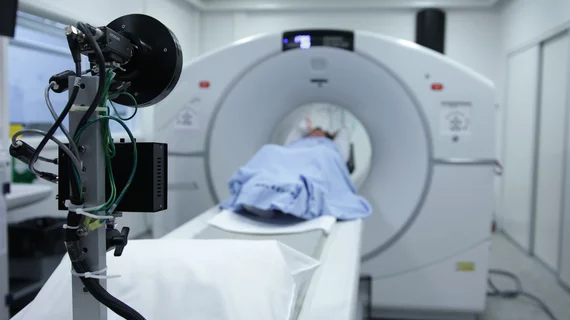Radiomics-based tool predicts fracture risk in COPD patients
Opportunistic CT-based fracture risk assessment tools could be an “indispensable asset” for patients who have chronic obstructive pulmonary disease, authors of a new paper in Academic Radiology claim.
The new research suggests that such technology can be leveraged alongside routine CT scans to improve risk assessments without accruing additional expenses for patients and clinicians, potentially filling in gaps where dual X-ray absorptiometry (DXA) exams fall short. These tools could be especially beneficial for COPD patients, as they are at an increased risk of fractures.
“Osteoporosis has emerged as a critical comorbidity associated with COPD, heightening the risk of fractures and burdening patients with increased morbidity and mortality,” corresponding author Jian Qin, with the Second Affiliated Hospital of Shandong First Medical University in China, and co-authors noted. “Fractures related to COPD can further exacerbate lung function and impede daily activities, creating a detrimental cycle that places significant strain on these individuals.”
This latest study deployed a radiomics-based algorithm that incorporated data on patients’ demographics, clinical profiles, pulmonary function tests and CT-based bone quantification metrics derived from routine scans to predict fracture risk. Its utility was retrospectively compared to that of a conventional fracture risk assessment tool (FRAX) on a group of 284 patients diagnosed with COPD to determine whether it could provide better insight into patients’ risk.
Nearly 40% of the group sustained fragility fractures after their initial CT scans. By integrating age, cancellous bone volume, average cancellous bone density, high-density lipoprotein levels, and prior fracture incidence, the team’s fracture risk assessment tool (FRCT) achieved a superior performance to standard FRAX predictions. Additional assessments using the Hosmer-Lemeshow test further validated FRCT’s utility, emphasizing its superior calibration and discrimination capabilities.
The group suggested that similar tools could be used to identify COPD patients at greater risk of fractures, enabling providers to initiate preventive treatment plans.
“Overall, while FRAX provides a foundational approach, the FRCT model represents a significant advancement by offering a more nuanced assessment of fracture risk, leading to better-informed treatment decisions and more personalized care strategies,” the authors wrote. “The model empowers personalized care for COPD patients by offering tailored risk assessments, identifying those at high risk for exacerbations or disease progression."
The study abstract is available here.

